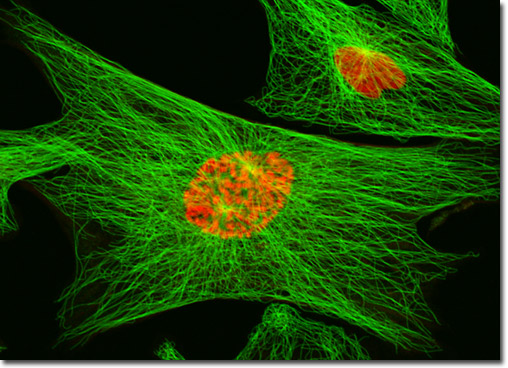Effects of Basic Fibroblast Growth Factor
Human early follicle growth in vitro is improved with the addition of basic fibroblast growth factor (bFGF), according to research from China.
bGb takes part in follicle development. Mammal studies have documented expression of bFGF and its receptors in early ovarian follicles in rat (Nilsson et al., 2001), goat (Wandji et al., 1992), cow (van Wezel et al., 1995) and human (Yeh and Osathanondh, 1993; Quennell et al., 2004; Ben-Haroush et al., 2005).
In human ovarian tissue culture, bGFG reportedly plays a role in estrogen production by the ovarian cortex, and high doses of bFGF improve primordial follicle development (Garor et al.,2009).
A recent study by Gao et al. (2013) found that bFGF may significantly improve quality of transplanted ovarian tissues.In the current study, researchers T. Wang and colleagues sought to determine the effects of bFGF on growth of individual early human follicles in a three-dimensional (3D) culture system
in vitro.
“The addition of 200 ng bFGF/ml improves human early follicle growth, survival and viability during growth in
vitro,” stated Wang et al. (“Basic fibroblast growth factor promotes the development of human ovarian early follicles during growth in vitro,” HR, 2014;29(3):568-576).
Ovarian tissue samples were obtained from 11 women undergoing laparoscopic surgery for gynecological disease. Follicles were isolated from fresh tissue as previously described (Vanacker et al., 2011). Follicles were encapsulated in a 1% alginate bead as previously described (Xu et al., 2006a, b), with some modifications.
Follicles were randomly divided into four study groups and transferred to basic culture media supplemented with bFGF 0, 100, 200, or 300 ng/ml. Half of the culture media was replaced every 2 days and morphology of
follicles was analyzed and diameter was measured.
Fresh culture media was prepared weekly. Follicles were observed, photographed, and had diameters calculated. Growth and survival data were reported on Day 8 of culture. Follicles were considered to be surviving unless they had dark oocytes and/or granulosa cells (GCs) or had no integrity between the oocyte and the GCs (Xu et al., 2009b). Early follicular stages were classified into four types based on descriptions by Gougeon (1996) and Fortune (2003): primordial follicle, primary follicle, secondary follicle, and pre-antral follicle. Follicles were incubated with fluorescent dyes (Cortvrindt and Smitz, 2001), washed, and examined under a microscope. Follicles were then classified into four categories based on the presence of dead GCs: Viability I (V1), live follicles; Viability 2 (V2), minimally damaged follicles; Viability 3 (V3), moderately damaged follicles; Viability 3 (V3), moderately damaged follicles; Viability 4 (V4), dead follicles (Dolmans et al., 2006).
Statistical analysis utilized SPSS 18.0 software and included Kruskal-Wallis test and MannWhitney tests with post
hoc tests, as required. P < 0.05 was considered significant.
In total, 154 follicles were cultured, all of which increased in size after 8 days. Initial mean diameters in groups cultured with 0 ng/ml bFGF (n = 38), 100 ng/ml (n = 42), 200 ng/ml (n = 39) and 300 ng/ml bFGF (n = 35) were 75.9 ± 20.4, 76.4 ± 22.9, 77.9 ± 20.1, and 74.6 ± 23.1 µm, respectively. No significant differences were noted in size among the four groups. At the end of Day 8, follicular sizes for bFGF 0, 100, 200 and 300 ng/ml groups had increased to 90.2 ± 29.8, 117.3 ± 42.5, 133.3 ± 35.1, and 110.0 ± 39.2 µm, respectively. Diameter in the group 200 ng/ml bFGF on Day 6 and 8 (128.4 ± 35.2 and 133.3 ± 35.1 µm) was significantly (P < 0.05) higher than that of the group of 0 ng/ml bFGF (88 ± 22.8 and 90.2 ± 29.8 µm).
bFGF culture also promoted follicle survival. Survival rate of follicles in the 0 ng/ml bFGF group was 36.8% at Day 8, but survival rates for those in the 100, 200, and 300 ng/ml bFGF groups increased significantly to 73.8, 76.9, and 65.7%, respectively. After 8 days in IVC, a significantly higher number of follicles had activated and differentiated into advanced follicle stages in the 200 ng/ml group compared to the 0 ng/ml bFGF group (P < 0.05).
Ninety-eight isolated human follicles were examined for viability on Day 8. Viability was significantly (P < 0.05) higher in the 200 ng/ml bFGF group with 77.2% V1 and V2 (13.6% + 63.6%, respectively) compared to that of the 0 ng/ml bFGF group with 16.7% V1 and V2 (0% + 16.7%, respectively). Poor quality follicles (V3 + V4) accounted for 83.3% in the 0 ng/ml bFGF group, with 41.7% dead follicles (V4); while in the group of 200 ng/ml bFGF, V3 + V4 accounted for 22.7%, with 9.1% of dead follicles (V4) (P < 0.05).
In concluding their study, Wang et al. wrote, “We have shown that the growth of human follicles at early stage can be promoted by bFGF in 3D system.”
Address correspondence to Jie Qiao, Department of Obstetrics and Gynecology, Peking University Third Hospital, No. 49 Hua Yuan Bei Road, HaiDian District, Beijing 100191, China; e-mail: jie.qiao@263.net.
More
